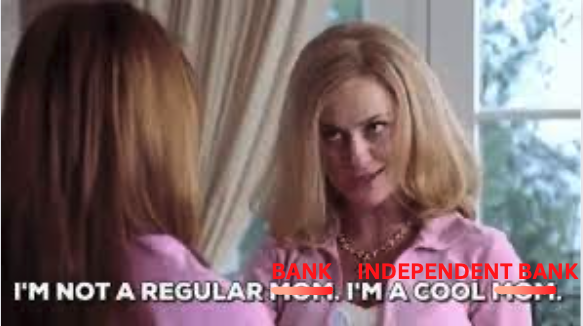Meet the RBA: Australia’s central bank that sets the cash rate, keeps inflation tame, and makes the money moves that shape our economy.
We've been seeing the RBA in the news a lot over the last few months. We know they set the cash rate each month, which *somehow* tackles inflation.
But what actually is the RBA and what else do they do?
The RBA or Reserve Bank or Australia is a central bank. It’s not like a regular bank, it’s a national authority that’s focused on keeping the country’s economy and financial system stable.

Like most central banks, the RBA is an independent baddie. It’s not owned by the government and is politically neutral.
The RBA has nine members and unlike pollies, there’s no limit on how many terms they can serve.
The current Governor and Chair of the RBA is Michelle Bullock, ie this lady.

The RBA looks after the economy in a bunch of different ways that are called *monetary policies*.
If you’ve got the business world over here, and the government over there, the RBA sits somewhere in the middle doing it’s thang to try and keep prices stable, ensure that unemployment doesn’t fly off the handle, and general financial stability.
The RBA can increase or decrease the amount of money in supply, as well as control interest rates to keep inflation and unemployment in check. They also do a whole bunch of other things like print money when needed, manage foreign exchange, and advise the government on financial policy.
Unlike Cardi B’s splashy money moves, the RBA tends to be more considered before using one of the many tools in its toolbag.
Eight times a year (which you can find here) the RBA besties get together to look at the economy and set monetary policy, usually by setting the target cash rate (more on that below).
They announce the target cash rate at 2:30pm (AEST/AEDT) on the scheduled date.
In a nutshell…so that the country doesn’t become bankrupt.
The main way RBA implements its monetary policies is by setting the cash rate target.
The cash rate is the interest rate that the RBA charges commercial banks (the banks we have savings accounts in) and they increase or decrease that rate depending on the needs of the economy.
If the RBA ups the cash rate, then banks up their interest rates to customers on things like home loans (and hopefully savings accounts too!). And vice versa.
This is how the RBA helps control inflation and unemployment and keeps the stability in the economy.
Disclaimer: All information contained in the Flux app, www.flux.finance, www.joinflux.com, app.flux.finance and any podcast of Flux Media Pty Ltd (ABN 27 639 804 345) is for education and entertainment purposes only. It is not intended as a substitute for professional financial, legal or tax advice. While we do our best to provide accurate information on the podcast, we accept no responsibility for any inaccuracies that may be communicated.
Flux does not operate under an Australian financial services licence and relies on the exemption available under section 911A(2)(eb) of the Corporations Act 2001 (Cth) and ASIC RG 36.66. Flux Technologies Pty Ltd provides general advice on credit products under our own Australian Credit Licence No. 530103.
Sign up for Flux and join 100,000 members of the Flux family